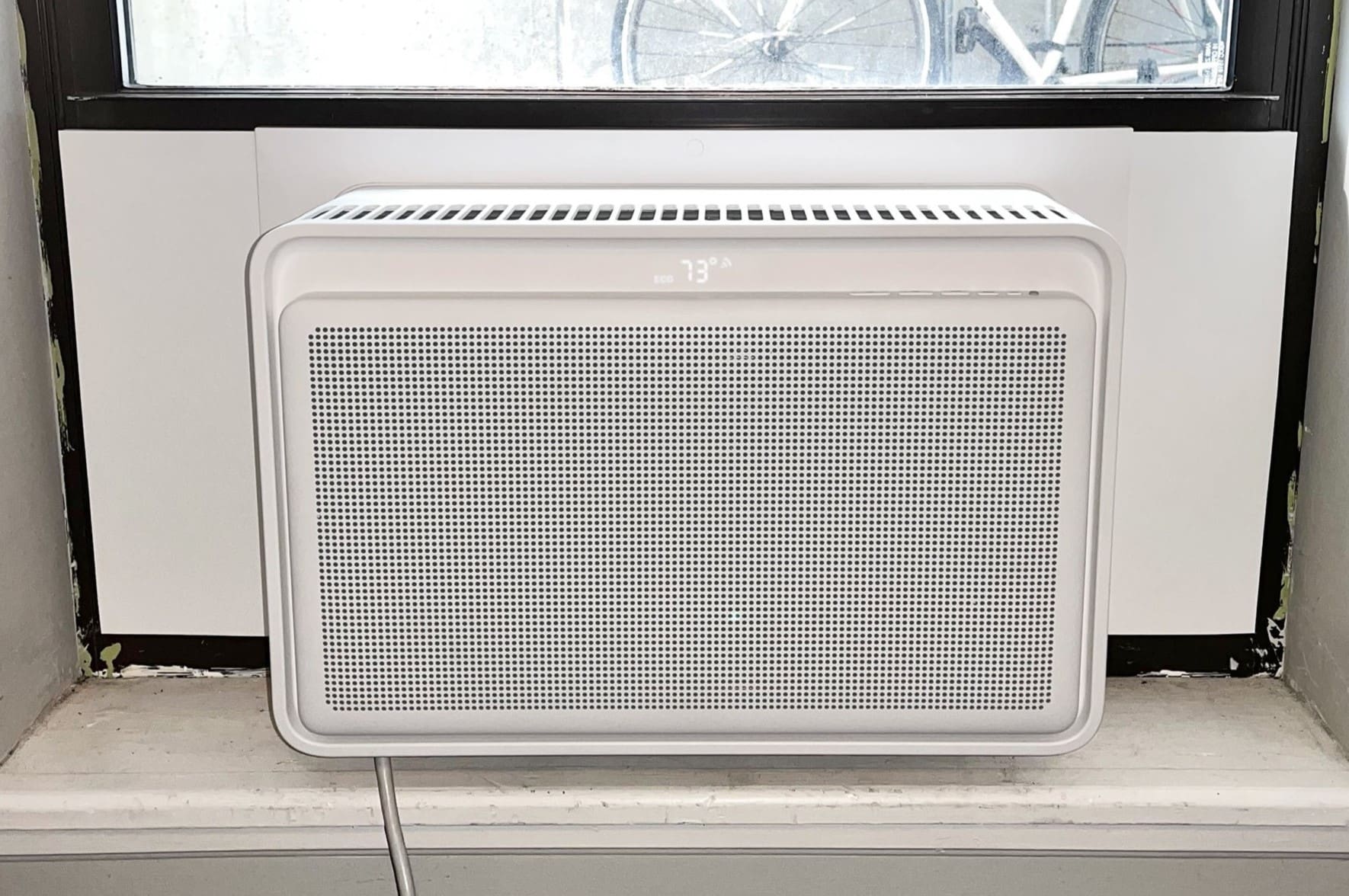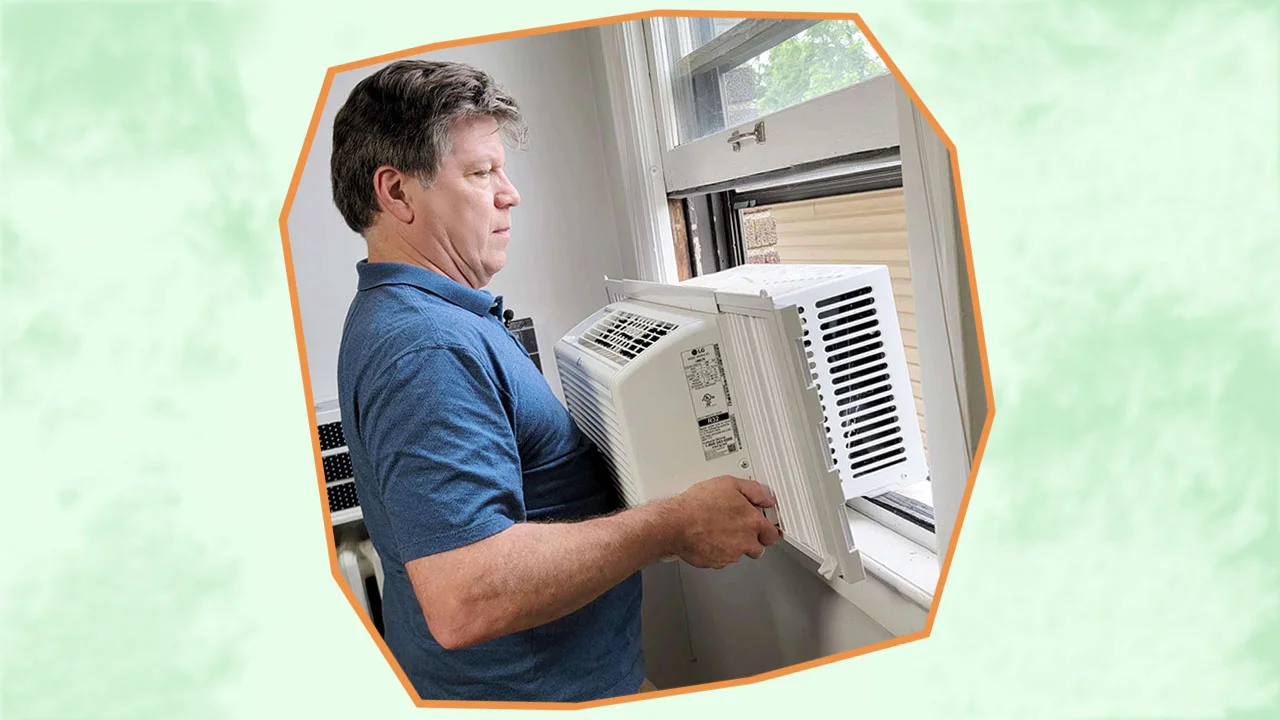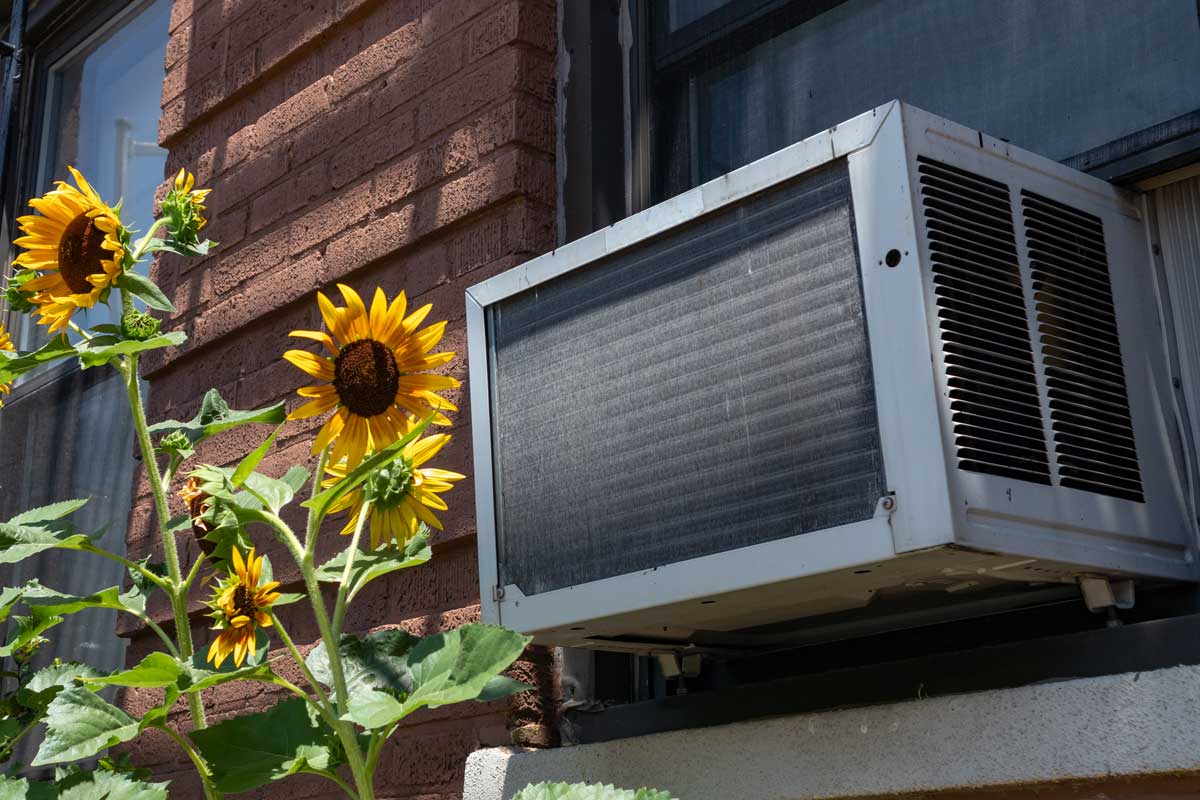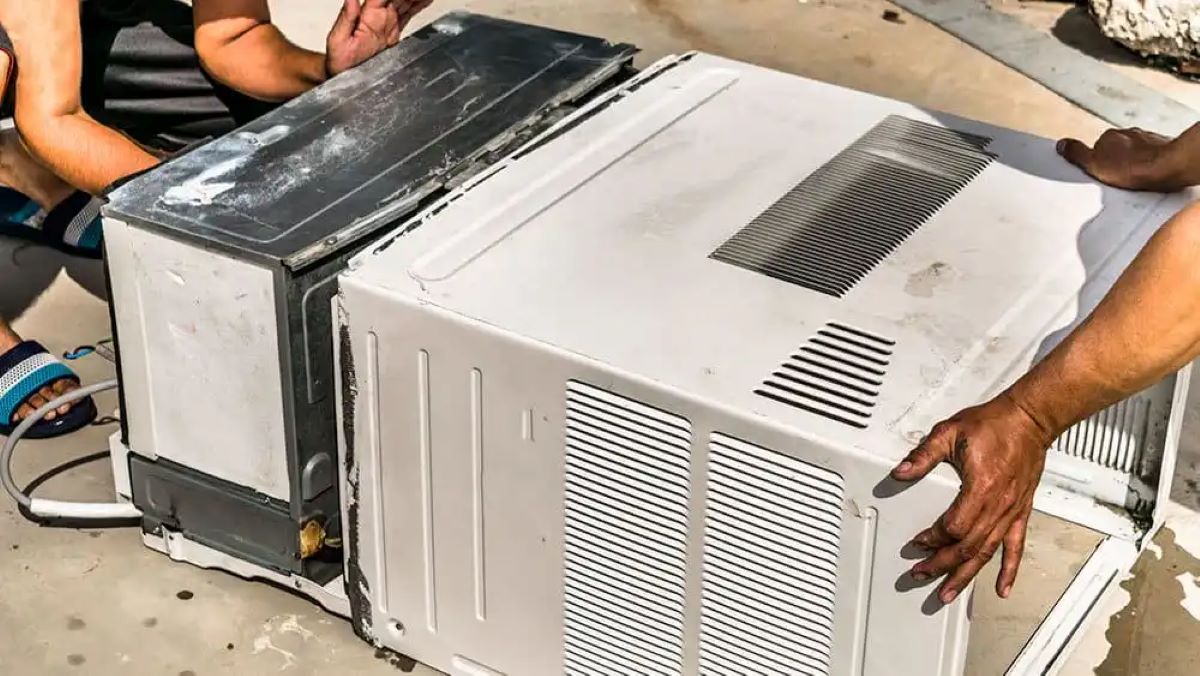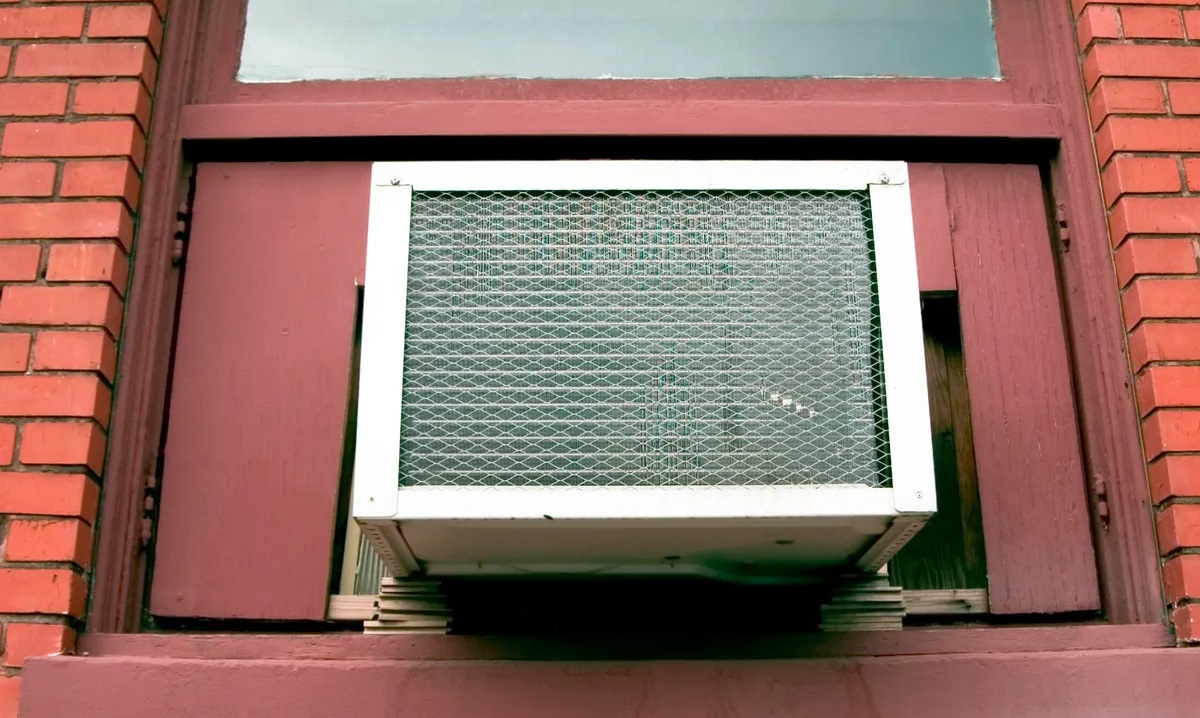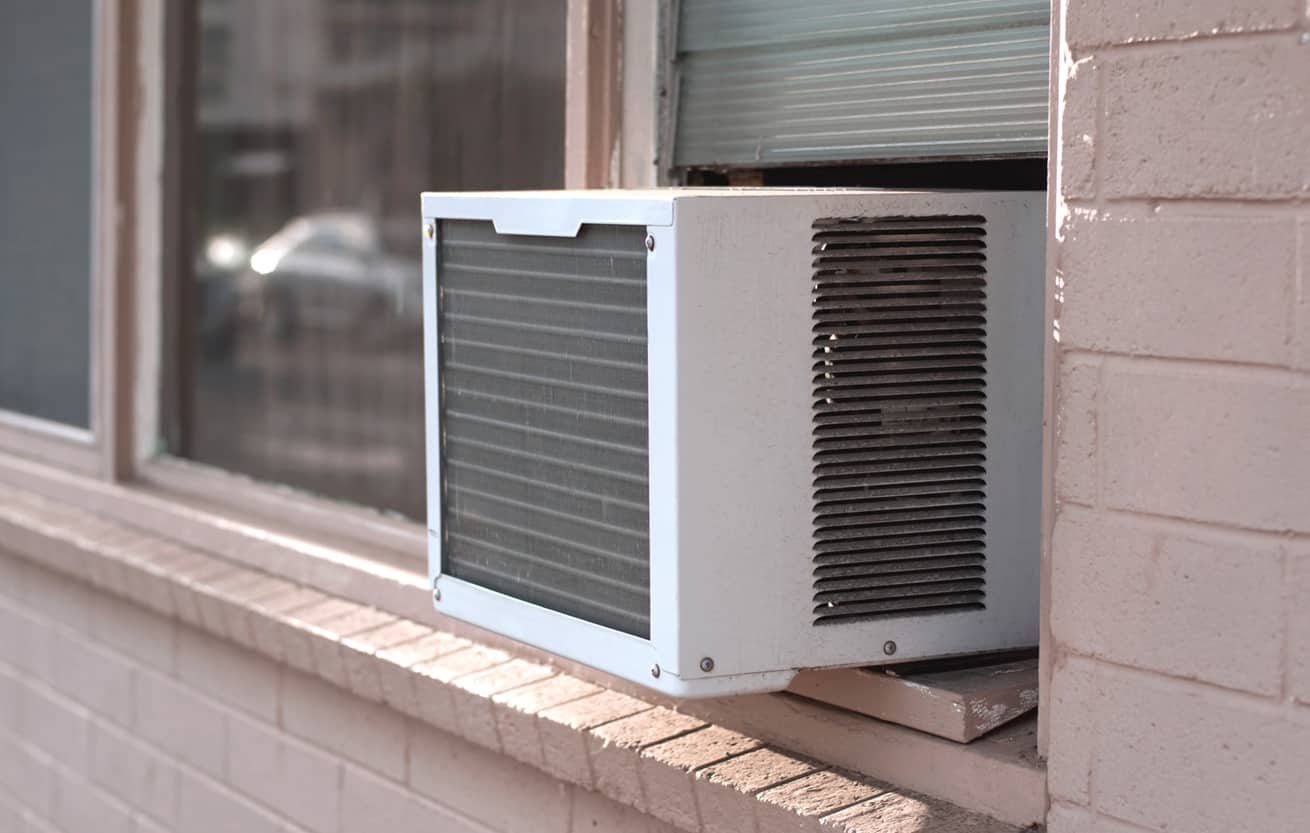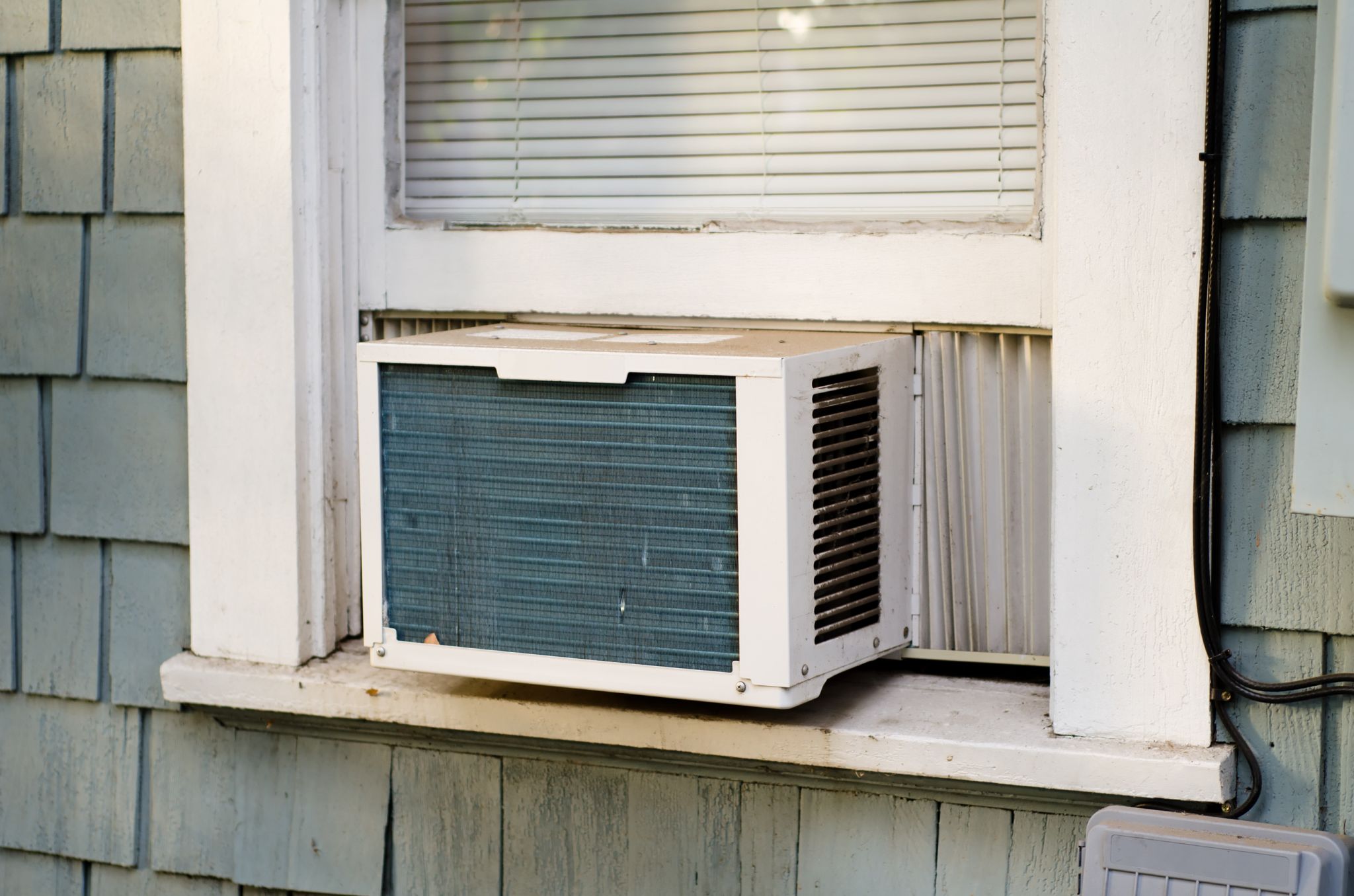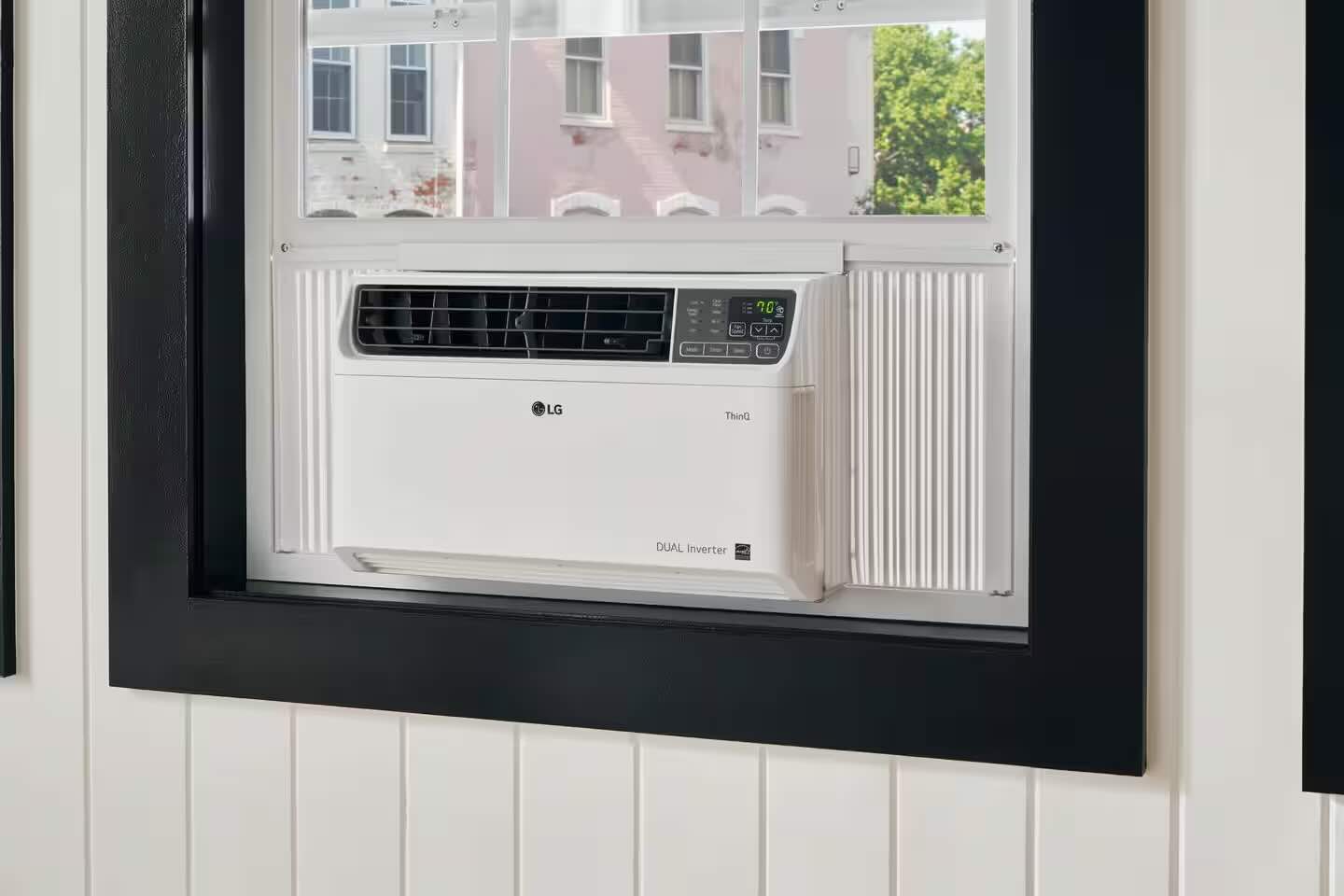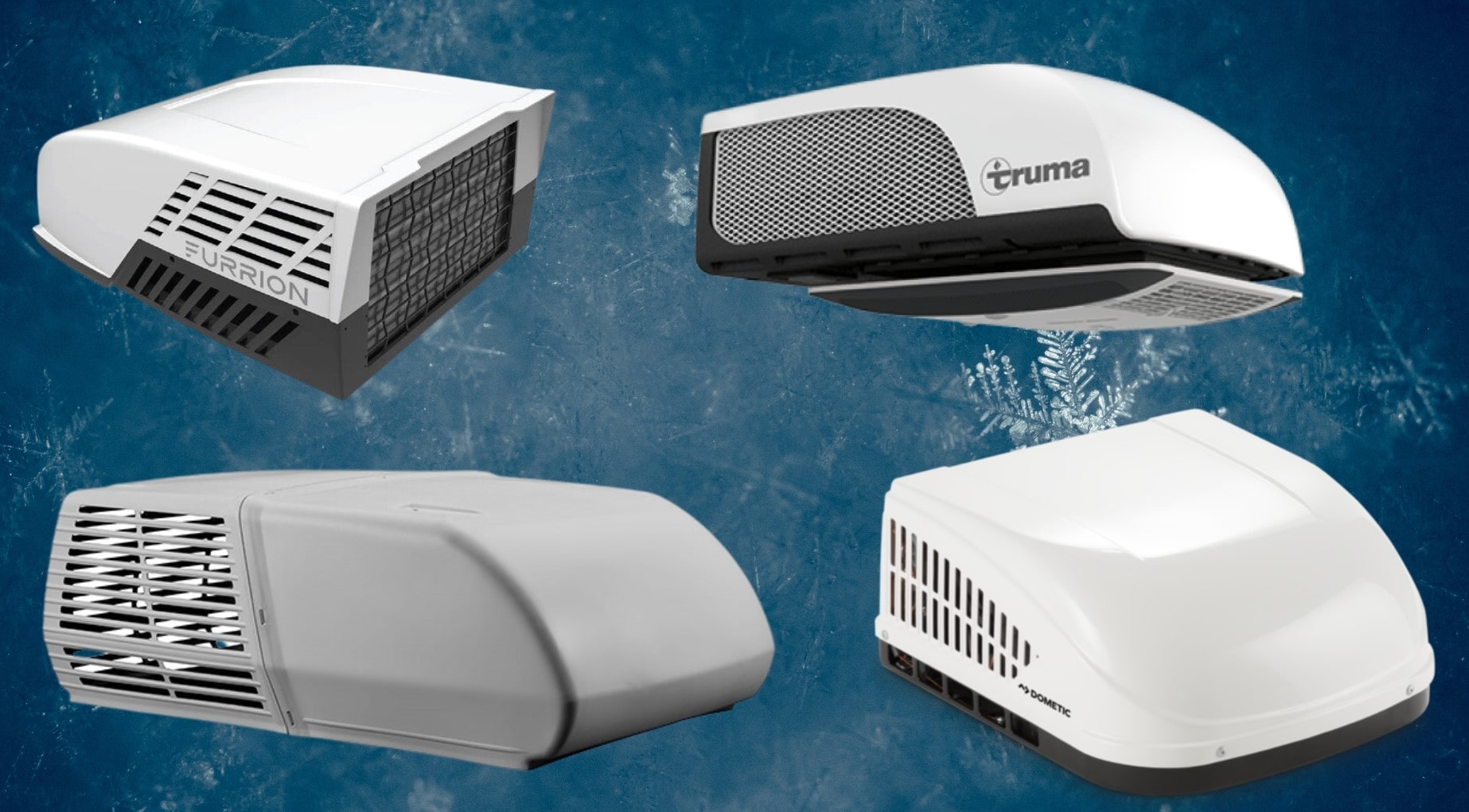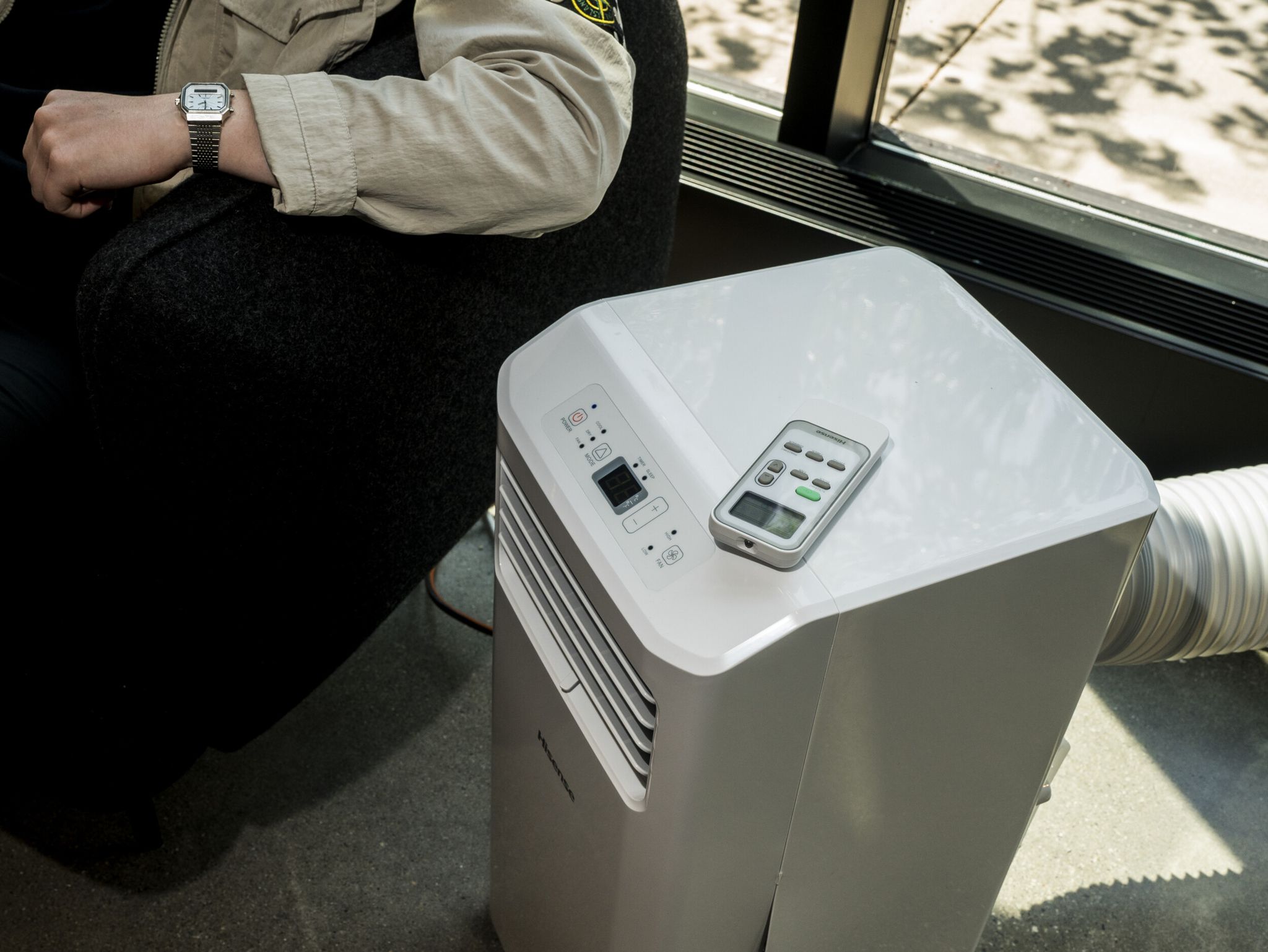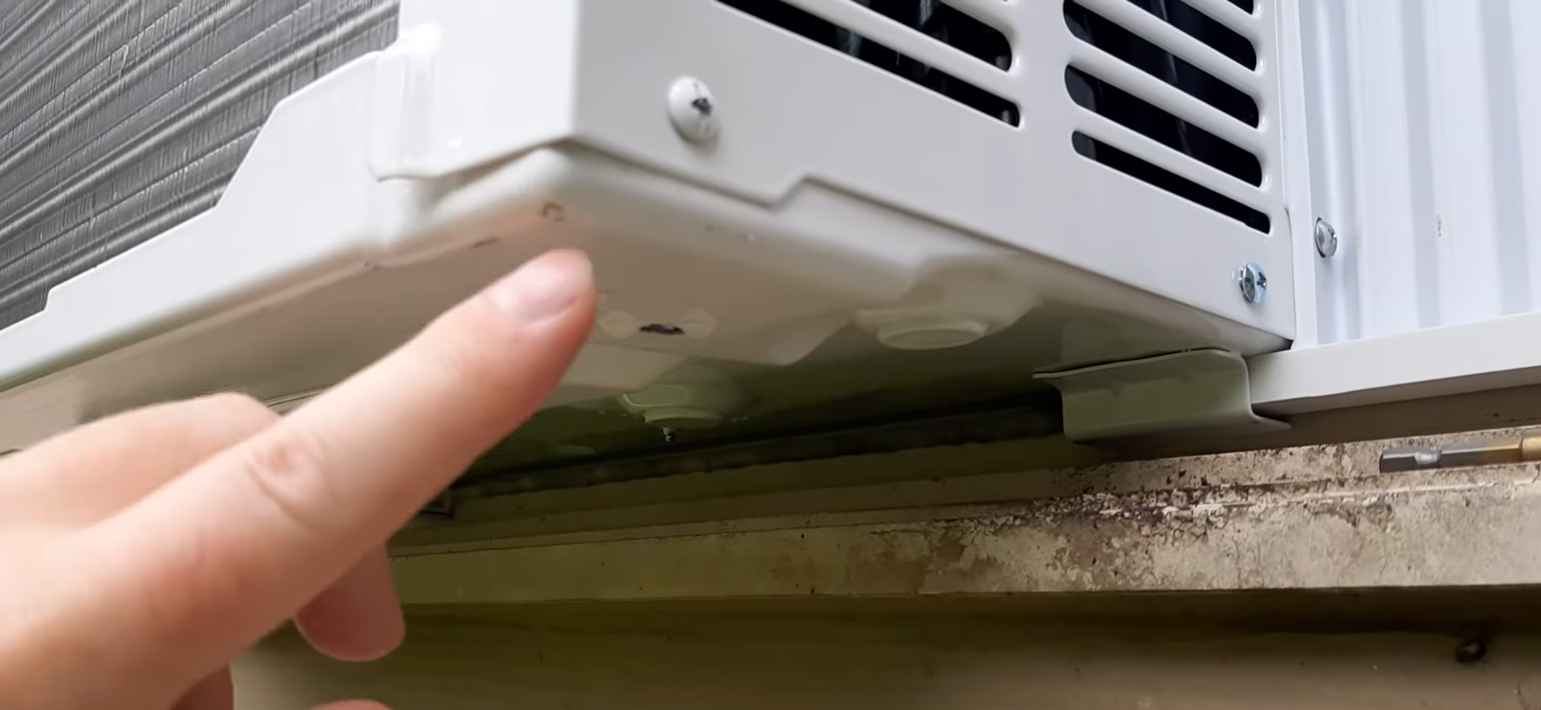Home>Home Maintenance>How Many Blower Motors Does A Window Air Conditioner Have?
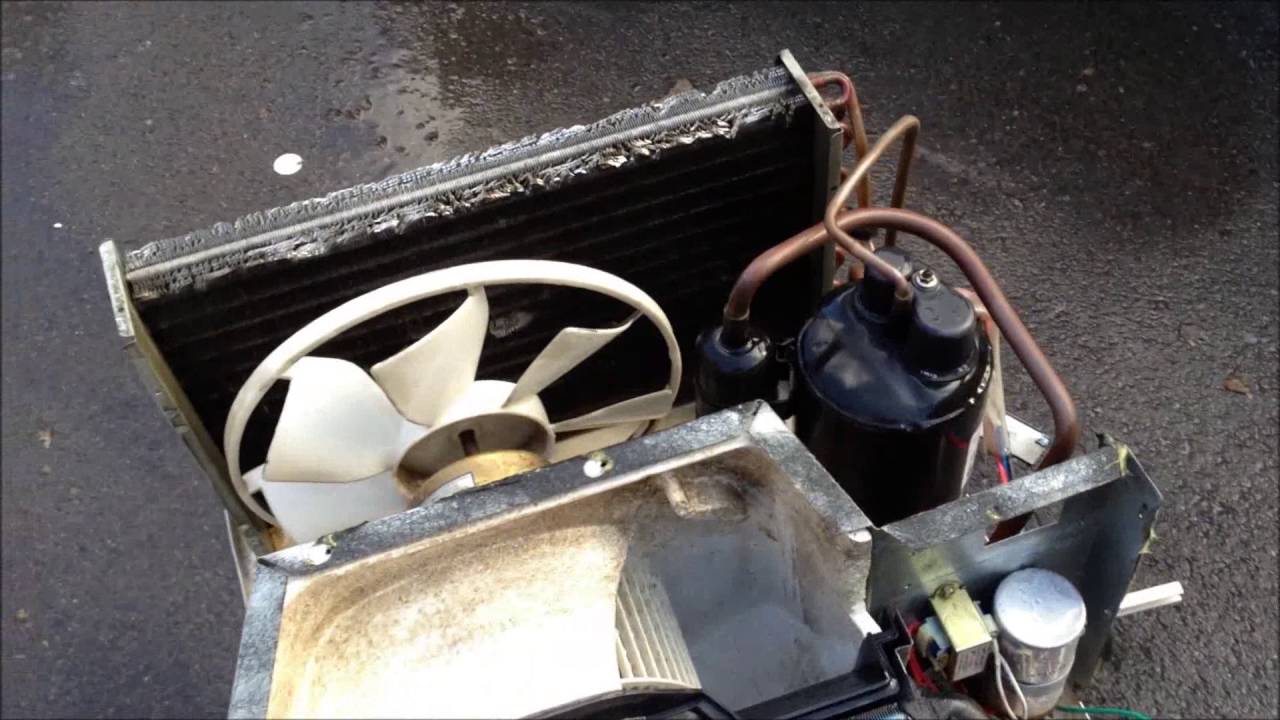

Home Maintenance
How Many Blower Motors Does A Window Air Conditioner Have?
Modified: October 20, 2024
Learn about home maintenance with window air conditioners and find out how many blower motors are typically included in these units.
(Many of the links in this article redirect to a specific reviewed product. Your purchase of these products through affiliate links helps to generate commission for Storables.com, at no extra cost. Learn more)
Introduction
Welcome to the world of home maintenance, where keeping your living space in optimal condition is key to a comfortable and functional environment. One crucial aspect of home maintenance is ensuring the efficient operation of your window air conditioner. As the temperatures rise, having a properly functioning AC unit becomes essential for providing cool air and maintaining a pleasant indoor climate.
When it comes to window air conditioners, there are various components that work together to deliver the desired cooling effect. One of the essential components is the blower motor, which plays a vital role in the unit’s overall functionality. But have you ever wondered how many blower motors a window air conditioner typically has? In this article, we’ll explore the workings of a window AC and shed light on the number of blower motors you can expect to find in these units.
Before we dive into the specifics, let’s quickly explore how a window air conditioner works. This will provide a better understanding of the role that the blower motor plays within the system.
Key Takeaways:
- Window air conditioners typically have a single blower motor, but larger or advanced models may feature multiple blowers for better cooling. Understanding the role of blower motors helps in choosing the right unit for your space.
- Blower motors are essential for cooling, air circulation, and moisture removal in window air conditioners. Consider factors like room size and layout when deciding between units with single or multiple blowers.
Read more: How Many KWh Does An Air Conditioner Use
How a Window Air Conditioner Works
To appreciate the significance of the blower motor in a window air conditioner, it’s important to grasp the basic functioning of the unit as a whole. A window AC works on the principle of removing heat from the indoor air and releasing it outside, thereby cooling down the room. It achieves this through a process known as refrigeration.
The key components of a window air conditioner include a refrigerant, a compressor, an evaporator coil, a condenser coil, and, of course, the blower motor. The refrigerant, typically a chemical compound called Freon, circulates through these components, changing from a gas to a liquid and back again.
When you turn on the AC, the blower motor starts to operate, drawing warm air from the room through the return air grille. The air then passes over the evaporator coil, which is filled with cold refrigerant. As the refrigerant absorbs the heat from the air, it changes from a liquid to a gas, effectively cooling the air in the process. The now-cooled air is then blown back into the room by the blower motor, creating a comfortable, cool environment.
The pressurized hot gas refrigerant then moves to the condenser coil, located on the exterior part of the unit, where the heat is released into the outside air. From there, the refrigerant returns to the compressor to be compressed back into a high-pressure gas, ready to repeat the cycle once again.
Now that we have an overview of how a window air conditioner functions, let’s delve deeper into the role of the blower motor within this system.
Components of a Window Air Conditioner
A window air conditioner consists of several key components that work together to provide effective cooling. Understanding these components is essential in comprehending the role and importance of the blower motor.
Here are the main components of a window air conditioner:
- Chassis: The chassis is the outer casing of the unit and houses all the internal components.
- Compressor: The compressor is responsible for compressing the refrigerant gas, increasing its temperature and pressure.
- Condenser Coil: The condenser coil is located on the outside of the unit and helps dissipate the heat absorbed from the indoor air.
- Evaporator Coil: The evaporator coil is filled with the cold refrigerant and is responsible for cooling the air drawn from the room.
- Blower Motor: The blower motor is an electric motor that drives the fan or blower to circulate the air within the unit.
- Air Filter: The air filter is responsible for trapping dust and debris, ensuring clean air circulation.
- Thermostat: The thermostat controls the temperature settings and activates the AC unit as needed.
- Control Panel: The control panel allows users to adjust settings, such as temperature, fan speed, and mode.
- Exhaust Fan: The exhaust fan helps expel hot air generated during the cooling process.
These components work in harmony to cool down the indoor air and maintain a comfortable environment. The blower motor, in particular, plays a crucial role in the circulation of air within the unit and ensures efficient cooling throughout the space.
Next, let’s explore the significance of the blower motor in a window air conditioner and its specific function within the system.
The Blower Motor in a Window Air Conditioner
The blower motor is a vital component of a window air conditioner that is responsible for circulating the air within the unit. It is essentially an electric motor that drives the fan or blower, creating airflow to cool down the evaporator coil and distribute the cooled air throughout the room.
Located within the indoor unit of the window AC, the blower motor operates in conjunction with the other components to achieve efficient cooling. It draws warm air from the room, passes it over the evaporator coil to be cooled, and then blows the cooled air back into the space.
The blower motor consists of a motor stator, rotor, and a fan blade. When electricity is supplied to the motor, it creates a rotational force, which causes the rotor to spin. This spinning motion drives the fan blade, which in turn generates airflow.
The speed at which the blower motor operates can often be adjusted using the control panel of the air conditioner. This allows users to customize the airflow according to their preferences, whether they desire a gentle breeze or a more powerful cooling effect.
It’s important to note that the blower motor not only facilitates the cooling process but also helps maintain proper air circulation within the unit. This is crucial for preventing stagnant air, removing humidity, and ensuring consistent cooling throughout the room. Without a functioning blower motor, the window air conditioner would be unable to cool the room effectively.
Now that we have a better understanding of the blower motor’s role, let’s explore how many blower motors you can expect to find in a typical window air conditioner.
Understanding the Function of Blower Motors
Blower motors play a crucial role in the overall functionality of a window air conditioner. They are responsible for creating airflow within the unit, which is essential for cooling the evaporator coil, distributing the cooled air, and maintaining proper air circulation. Understanding the function of blower motors is key to appreciating their significance in keeping your space cool and comfortable.
Here are the primary functions of blower motors in a window air conditioner:
- Air Circulation: Blower motors generate airflow within the unit, ensuring proper circulation of air. This helps prevent stagnant air, maintain consistent cooling throughout the room, and improve overall comfort.
- Cooling the Evaporator Coil: The blower motor pulls warm air from the room and passes it over the evaporator coil, which contains the cold refrigerant. This process cools down the air before it is blown back into the room.
- Distributing Cooled Air: Once the air is cooled, the blower motor pushes it out of the unit and into the room. This ensures even distribution of the cooled air, helping to maintain a comfortable indoor temperature.
- Removing Moisture: Blower motors aid in removing moisture from the air by circulating it over the cold evaporator coil. As the air passes over the chilled surface, the moisture condenses, helping to dehumidify the room.
- Filtering Air: Window air conditioners are equipped with air filters that trap dust, debris, and allergens. The blower motor helps draw air through these filters, ensuring cleaner and healthier indoor air quality.
Without a properly functioning blower motor, a window air conditioner would not be able to perform these essential functions effectively. It is therefore crucial to regularly maintain and service your AC unit to ensure the blower motor is operating optimally.
Now that we understand the role and function of blower motors, let’s explore how many of these motors you can typically find in a window air conditioner.
Window air conditioners typically have one blower motor. This motor is responsible for circulating the cool air throughout the room. Regular maintenance of the blower motor can help ensure efficient cooling.
Read more: What Is A Window Air Conditioner
Number of Blower Motors in a Window Air Conditioner
The number of blower motors in a window air conditioner can vary depending on the size, capacity, and model of the unit. Generally speaking, most standard-sized window AC units have a single blower motor that drives the fan or blower to circulate the air within the system. This single blower motor is usually sufficient to provide efficient cooling and maintain proper air circulation in smaller to medium-sized rooms.
However, larger or more advanced window air conditioners, such as those designed for larger rooms or commercial spaces, may feature multiple blower motors. These units are typically referred to as multi-blower or dual-blower window air conditioners.
Multi-blower window air conditioners are designed to provide enhanced cooling performance and better air distribution in larger spaces. By having multiple blower motors, these units can achieve higher airflow rates and deliver cooler air more quickly and effectively. The multiple blowers also help to reduce the workload on each motor, leading to increased longevity and improved overall performance.
It’s important to note that while multi-blower window air conditioners provide certain advantages, they are not necessary for every situation. For most residential applications and smaller rooms, a single blower motor is typically sufficient to provide efficient cooling and maintain a comfortable environment.
When choosing a window air conditioner, it is recommended to consider the size of the room and the cooling capacity needed. If you have a larger space or desire advanced cooling capabilities, a multi-blower unit may be a suitable option. However, for most households and smaller rooms, a standard window AC with a single blower motor can effectively meet your cooling needs.
Now that we understand the factors that can influence the number of blower motors in a window air conditioner, let’s explore the benefits and drawbacks of having multiple blowers in these units.
Factors Affecting the Number of Blower Motors
Several factors can influence the number of blower motors in a window air conditioner. Manufacturers consider these factors when designing and engineering their units to ensure optimal performance and efficiency. Understanding these factors can help you make an informed decision when choosing a window AC that best suits your cooling needs.
Here are some key factors that can affect the number of blower motors in a window air conditioner:
- Size and Capacity: The size and cooling capacity of a window air conditioner play a significant role in determining the number of blower motors. Smaller units designed for smaller rooms typically require only one blower motor to provide sufficient cooling and air circulation. However, larger and more powerful units designed for larger spaces may feature multiple blower motors to achieve higher airflow rates and better cooling performance.
- Room Layout and Air Distribution: The layout of the room and the desired air distribution can also influence the number of blower motors. If you have a larger room with multiple areas or zones that require specific cooling, a window air conditioner with multiple blowers can help provide more targeted and evenly distributed air circulation.
- Advanced Features and Technology: Window air conditioners with advanced features and technologies, such as variable-speed blowers or adjustable louvers, may require multiple blower motors to provide enhanced performance. These features allow for greater customization of airflow and temperature settings, improving overall comfort and efficiency.
- Energy Efficiency: Energy-efficient window air conditioners are designed to provide maximum cooling while consuming minimal energy. In some cases, manufacturers may use multiple blower motors to achieve a higher level of energy efficiency by reducing the workload on each motor.
It’s important to note that the number of blower motors in a window air conditioner is not necessarily an indication of superior performance. A unit with a single blower motor can still effectively cool a room and provide comfortable airflow if it is appropriately sized and meets your cooling needs.
When choosing a window air conditioner, it’s essential to consider factors such as the size of the room, desired cooling capacity, layout, and any specific features you desire. This will help you determine whether a unit with a single blower motor or multiple blowers is most suitable for your needs.
Now that we understand the factors that can influence the number of blower motors, let’s explore the benefits and drawbacks of having multiple blowers in window air conditioners.
Benefits of Multiple Blower Motors in Window Air Conditioners
While many window air conditioners feature a single blower motor, some units are equipped with multiple blowers, which offer several benefits in terms of cooling performance and air distribution. Let’s explore the advantages of having multiple blower motors in window air conditioners:
- Enhanced Cooling Performance: Multiple blowers allow for higher airflow rates, resulting in more efficient and effective cooling. By increasing the volume of air circulated within the unit, these window air conditioners can cool down the room more quickly and maintain a comfortable temperature even in larger spaces.
- Improved Air Distribution: Units with multiple blowers can distribute cooled air more evenly throughout the room. This helps eliminate hot spots and ensures a consistent temperature throughout the space, providing increased comfort for occupants.
- Targeted Cooling: Multi-blower window air conditioners are particularly useful in rooms with irregular layouts or multiple zones. Each blower can be directed to a specific area, allowing for more targeted cooling and enhanced control over the airflow in different parts of the room.
- Reduced Workload: Having multiple blowers allows the workload to be divided among the motors, reducing strain on each individual motor. This can lead to increased motor longevity and overall unit durability.
- Flexible Airflow Options: Some window air conditioners with multiple blowers offer variable-speed settings or adjustable louvers, providing greater control over the direction and intensity of the airflow. This flexibility allows you to customize the cooling experience to your preference.
- Improved Energy Efficiency: Although it may seem counterintuitive, multiple blowers can contribute to improved energy efficiency in some cases. By distributing the workload among multiple motors, each blower can operate at a lower power level, reducing energy consumption while maintaining efficient cooling performance.
It’s important to note that the benefits of multiple blower motors may not be necessary for every situation. If you have a smaller room or a standard-sized window air conditioner, a single blower motor can still provide effective cooling and sufficient airflow.
Ultimately, the decision to opt for a window air conditioner with multiple blowers depends on your specific cooling needs, the size and layout of the room, and your preferences for airflow control and distribution.
Now that we’ve explored the benefits of multiple blowers in window air conditioners, let’s take a closer look at some potential drawbacks.
Drawbacks of Multiple Blower Motors in Window Air Conditioners
While there are several benefits to having multiple blower motors in window air conditioners, it’s important to consider the potential drawbacks as well. Let’s explore some of the drawbacks associated with units featuring multiple blowers:
- Higher Cost: Window air conditioners with multiple blowers are generally more expensive than units with a single blower motor. The additional cost is mainly due to the increased complexity of the system and the additional components required.
- Increased Noise: Multiple blowers can generate more noise compared to a single blower motor. The noise level may be influenced by factors such as the type of blower motors used, the speed settings, and overall system design.
- Space Requirements: Units with multiple blowers may require additional space within the window or the room. This can limit the installation options and may not be suitable for smaller window openings or rooms with limited space.
- Higher Power Consumption: While multiple blowers can enhance cooling performance, they can also lead to increased power consumption. Running multiple motors simultaneously requires more energy, which can lead to higher electricity costs over time.
- Complex Maintenance: Window air conditioners with multiple blowers may require more intricate maintenance. Cleaning and servicing multiple blowers and their associated components can be more time-consuming and challenging compared to units with just one blower motor.
It’s important to note that these drawbacks may not be significant concerns for everyone, and they can often be outweighed by the benefits provided by units with multiple blowers. However, it’s essential to consider these factors and evaluate whether the advantages of multiple blowers align with your cooling needs and priorities.
When considering a window air conditioner with multiple blowers, it’s also important to thoroughly research and read reviews to ensure that the specific unit you are considering is reliable, efficient, and well-suited for your specific requirements.
Now that we’ve explored the potential drawbacks of multiple blower motors in window air conditioners, let’s summarize our findings.
Read more: How Much Does HVAC Blower Motor Cost?
Conclusion
When it comes to window air conditioners, the number of blower motors can vary depending on various factors. While most standard-sized units typically feature a single blower motor, larger or more advanced models may incorporate multiple blowers to enhance cooling performance and air distribution.
Understanding the function of blower motors is crucial in appreciating their significance in window air conditioners. These motors drive the fan or blower, creating airflow to cool the evaporator coil, distribute cooled air, maintain proper air circulation, and remove moisture.
Factors such as the size and capacity of the unit, room layout, advanced features, and energy efficiency considerations can influence the presence of multiple blower motors in a window air conditioner. While multi-blower units offer benefits like enhanced cooling performance, improved air distribution, and targeted cooling, they also come with drawbacks such as higher cost, increased noise, and potentially higher power consumption.
Ultimately, the decision to opt for a window air conditioner with multiple blowers depends on individual needs, room size, layout, and preferences for airflow control. For most residential applications and smaller rooms, a single blower motor is typically sufficient to provide efficient cooling.
When choosing a window air conditioner, it’s essential to consider factors such as the cooling capacity, room size, layout, and desired features to determine the most suitable unit for your needs. Regular maintenance and servicing of the blower motor, regardless of the number, is vital to ensure optimal performance and longevity.
With proper care and consideration, your window air conditioner, whether it has a single blower motor or multiple blowers, will provide reliable cooling and help maintain a comfortable indoor environment.
Frequently Asked Questions about How Many Blower Motors Does A Window Air Conditioner Have?
Was this page helpful?
At Storables.com, we guarantee accurate and reliable information. Our content, validated by Expert Board Contributors, is crafted following stringent Editorial Policies. We're committed to providing you with well-researched, expert-backed insights for all your informational needs.
